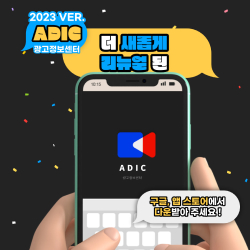- [CJ?메조미디어] 2025 타겟?리포트_50대
- [플레이디] 2025 광고·마케팅 트렌드 전망 리포트
- [나스미디어]2024년 11월 2025 디지털 미디어 & 마케팅 전망
- [2025년 7월] 2025 상반기 디지털 미디어 & 마케팅 결산
- [인크로스]2025년 1월 미디어 이슈 리포트
- [2025년 5월] 2025 NPR 요약보고서
- 기아차 SOUL의 혁신적인 제품전략 -소비자의 soul을 움직이다-
- [Case Study] 디지털 미디어 광고 사례
- 조선-중앙-동아일보의 유사성과 차별성:1면 구성과 사설의 이념성을 중심으로
- [2024년 12월] 한 장이면 고민 끝! 2025 마케팅 이슈 캘린더
교육적 오락물로서 TV 예능의 활용 가능성 : 수용자의 리얼리티 지각에 따른 예능 콘텐츠 유형을 중심으로
자료요약
본 연구는 TV 예능 콘텐츠가 교육적 오락물로서 가지는 가치를 탐구하고자 하였다. 이를 위해 시청자가 극 중 상황을 허구에 가깝다고 느끼는 의사사건형, 현실에 가깝다고 느끼는 관찰형으로 예능 콘텐츠 유형을 분류하고, 이에 따른 메시지 발신자에 대한 태도, 교육적 오락물에 대한 태도, 행동 의도의 차이를 살펴보았다. 그 결과, 환경보호 메시지가 삽입된 관찰형 예능 콘텐츠에서보다 의사사건형 콘텐츠를 접했을 때 발신자에 대한 태도, 교육적 오락물에 대한 태도, 행동 의도가 더 높게 나타났다. 한편, 환경보호 메시지 삽입에 의한 인지된 침입성은 교육적 오락물의 모든 종속 변인 차원에 부정적 영향을 미쳤다. 설득시도에 대한 의구심은 발신자에 대한 태도와 교육적 오락물에 대한 태도에 부적 영향을 미쳤으며, 지각된 콘텐츠 가치는 행동 의도에 정의 영향을 미쳤다. 본 연구의 결과는 교육적 오락물의 효과적 실행을 위해서는 공공 메시지를 삽입하는 과정에서 사람들이 침입성이나 의구심을 느끼지 않도록 하는 것이 중요하다는 것을 보여준다. 또한 이를 위해 교육적 오락물로 활용될 예능 콘텐츠에 대해 수용자들이 지각하는 실제감의 정도를 파악하는 것이 필수적인 과제임을 시사한다.
This study examined the value of using TV entertainment content as entertainment-education. Based on the audience’s perception of reality, entertainment shows are categorized into pseudo-event type entertainment with low perceived reality and observation type entertainment with high perceived reality. The results showed that when exposed to a public message in a pseudo-event type entertainment show rather than observational type, attitude toward the message sender and attitude toward educational entertainment were more positive, and the participants showed higher behavioral intentions. In addition, the perceived intrusiveness of the public message had negative effects on attitudes toward the message source, attitude toward the educational entertainment, and behavioral intentions. Persuasion knowledge also negatively affected attitude toward the message sender and educational entertainment. Perceived value of the content positively affected respondents’ behavioral intentions. In summary, in order to deliver public messages via entertainment-education effectively, reducing perceived intrusiveness and persuasion knowledge seems to be critical, and the viewers’ perceived reality of the content needs to be carefully considered when selecting entertainment shows.
This study examined the value of using TV entertainment content as entertainment-education. Based on the audience’s perception of reality, entertainment shows are categorized into pseudo-event type entertainment with low perceived reality and observation type entertainment with high perceived reality. The results showed that when exposed to a public message in a pseudo-event type entertainment show rather than observational type, attitude toward the message sender and attitude toward educational entertainment were more positive, and the participants showed higher behavioral intentions. In addition, the perceived intrusiveness of the public message had negative effects on attitudes toward the message source, attitude toward the educational entertainment, and behavioral intentions. Persuasion knowledge also negatively affected attitude toward the message sender and educational entertainment. Perceived value of the content positively affected respondents’ behavioral intentions. In summary, in order to deliver public messages via entertainment-education effectively, reducing perceived intrusiveness and persuasion knowledge seems to be critical, and the viewers’ perceived reality of the content needs to be carefully considered when selecting entertainment shows.
목차
1. 서론
2. 문헌연구
3. 가설
4. 연구 방법
5. 연구 결과
6. 논의 및 결론
7. 한계 및 제언
참고문헌
Abstract
2. 문헌연구
3. 가설
4. 연구 방법
5. 연구 결과
6. 논의 및 결론
7. 한계 및 제언
참고문헌
Abstract
#교육적 오락물
#예능 프로그램
#공공 메시지
#공공 커뮤니케이션
#Entertainment-Education
#Entertainment Show
#Public Message
#Public Communication











